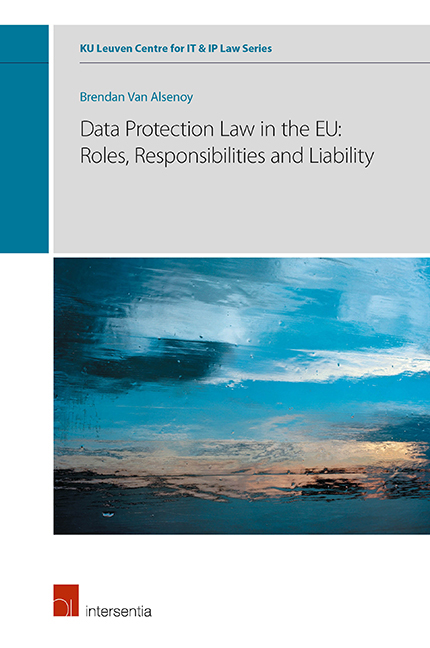Book contents
- Frontmatter
- Foreword
- Note to the Readers
- Acknowledgments
- Abstract
- Contents
- PART I INTRODUCTION
- PART II STATE OF THE ART
- PART III HISTORICAL-COMPARATIVE ANALYSIS
- Chapter 1 Introduction
- Chapter 2 The Emergence of Data Protection Law
- Chapter 3 National Data Protection Laws before 1980
- Chapter 4 International Instruments
- Chapter 5 National Data Protection Laws after 1981
- Chapter 6 irective 95/46/EC
- Chapter 7 General Data Protection Regulation
- Chapter 8 Conclusion
- PART IV USE CASES
- PART V RECOMMENDATIONS
- Bibliography
- Miscellaneous Endmatter
Chapter 5 - National Data Protection Laws after 1981
from PART III - HISTORICAL-COMPARATIVE ANALYSIS
Published online by Cambridge University Press: 26 June 2019
- Frontmatter
- Foreword
- Note to the Readers
- Acknowledgments
- Abstract
- Contents
- PART I INTRODUCTION
- PART II STATE OF THE ART
- PART III HISTORICAL-COMPARATIVE ANALYSIS
- Chapter 1 Introduction
- Chapter 2 The Emergence of Data Protection Law
- Chapter 3 National Data Protection Laws before 1980
- Chapter 4 International Instruments
- Chapter 5 National Data Protection Laws after 1981
- Chapter 6 irective 95/46/EC
- Chapter 7 General Data Protection Regulation
- Chapter 8 Conclusion
- PART IV USE CASES
- PART V RECOMMENDATIONS
- Bibliography
- Miscellaneous Endmatter
Summary
472. OUTLINE – This chapter will analyse two data protection laws enacted after 1981, namely the UK Data Protection Act of 1984 and the Belgian Data Protection Act of 1992. The objective of this analysis is to track the further development of EU data protection laws leading up to Directive 95/46. In the interest of brevity, the discussion of each act shall be reduced in scope. The discussion will be limited to (1) the origin and development of the act (in order to place it in context) and (2) the allocation of responsibility and liability. Substantive rights and obligations are not discussed separately, as these provisions correspond, by and large, to the provisions of Convention 108 and the OECD Privacy Guidelines.
UNITED KINGDOM (1984)
ORIGIN AND DEVELOPMENT
473. EARLY INITIATIVES – The UK Data Protection Act of 1984 had been a long time coming. The first legislative proposals concerning privacy emerged in the early 1960s, under the form of private member bills. These bills mainly sought to introduce a general right to privacy. None of these proposals made much of an impact, however, until the Right to Privacy bill of 1969. This bill was closely connected to a controversial Justice report entitled “Privacy and the Law” (1970). While the Right to Privacy bill was not adopted, the ensuing debate did induce the Government to appoint a Committee on Privacy, better known as the “Younger Committee”.
474. YOUNGER COMMITTEE – The Younger Committee was tasked to investigate whether legislation was necessary “to give further protection […] against intrusions into privacy by private persons and organisations, or by companies”. Its mandate of inquiry was thus confined to the private sector. In 1972, the Committee found that it would be unwise to create a general right to privacy. It also felt that the introduction of data protection legislation would be premature as the use of computers did not yet form a threat to privacy. It did, however, recommend that computer users voluntarily adopt certain principles for handling personal information on computers. It also recommended that the Government “provide itself with machinery, such as a standing commission, for keeping under review the growth and techniques of gathering personal information on computers”.
475. GOVERNMENT WHITE PAPER – After some years of delay, the UK Government issued a White Paper entitled “Computers and Privacy” (1975).
- Type
- Chapter
- Information
- Publisher: IntersentiaPrint publication year: 2019



